Honda & Mugen Debut 2019 ELectric MX Protos & TT Zero Racer
Suginami City, Tōkyō-to, Japan
** After nabbing five consecutive TT wins, Mugen Shinden pulls the cover off its latest full-faired racer, as well as its latest “E-Rex” electric dirtbike, meanwhile Honda debuts…the exact same electric dirtbike.**
For the last several years Mugen Shinden has been showing off its fully electric TT racer. Each year the full-faired ebike receives minor tweaks and upgrades, and while power figures haven’t improved since last year, 2019 is certainly no exception. This year’s bike — the “Hachi” (Japanese for “eight”) — has an identical spec-sheet to its 2018 predecessor — the “Nana” — though the 2019 model does boast revisions in the form of an updated aerodynamics package. The opening for the intake on the nose of the racer has been reworked, going from a centered, single-hole port to a dual-port system, a la the Panigale or Gixxer. While the zigzagging bodywork edges remain from last year’s model, the Hachi’s suspended tail sports a new design that almost certainly features a markedly lower drag-coefficient compared to the outgoing machine.
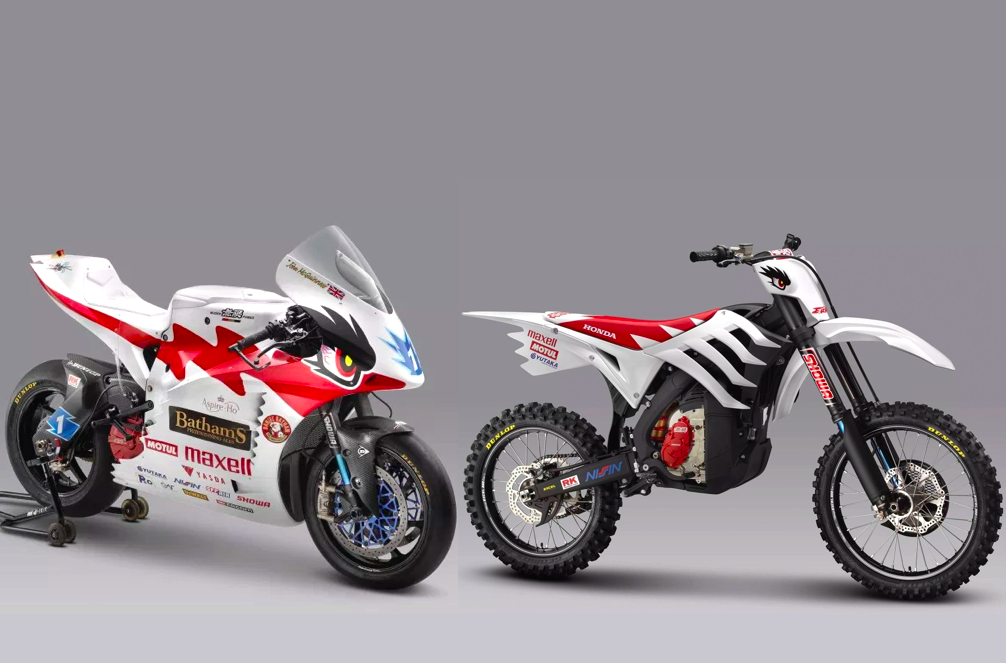
Mugen Shinden's 2019
Core Specs
Hidden beneath the sleek and slippery full bodywork of the Hachi is a CFRP monocoque chassis which houses the bike’s 370+ Volt laminate-type lithium ion battery and oil-cooled, three-phase brushless motor — which together afford a cool 155 foot-pounds of torque and a claimed 161 horsepower. With a claimed “wet” weight of 546.7lbs (248kgs), the Hachi is far from the lightest racer on the block, though it’s not unreasonably stout either.
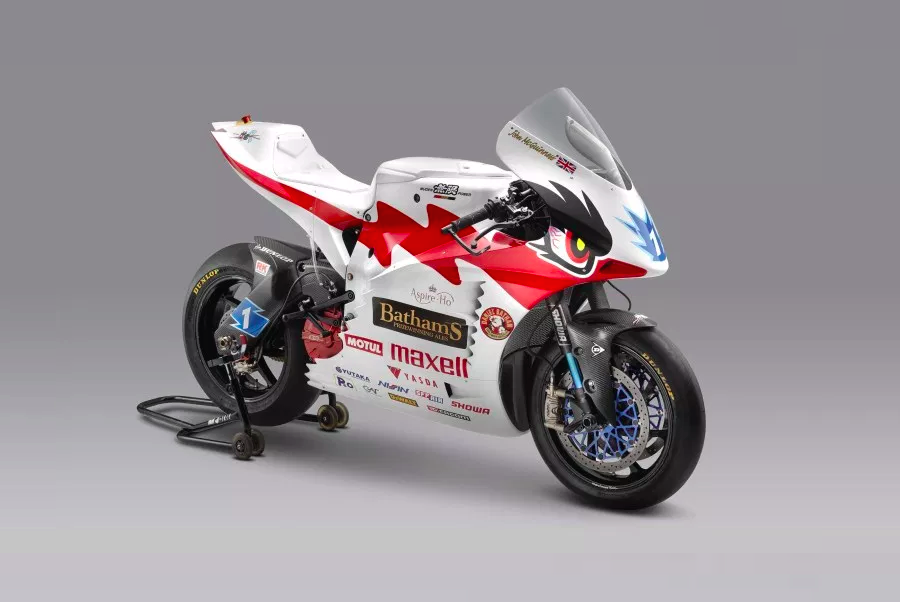
Rutter & McPint's fully-electric 2019 TT mount
Noteworthy Features:
One very cool aspect of the aforementioned tail section, is that its design doesn’t just look the business (which it so does), but it also has a neat little trick hidden up its sleeve thanks to what’s known as biomimicry — the practice of studying the mechanics and functions of forms in nature and applying them to (industrial and/or mechanical) design. A wonderful example of biomimicry is the bullet trains in Japan, which have shapes modeled after the beak on Kingfisher birds — borrowing an almost perfect, already existing design from nature, instead of creating a new aero/hydrodynamic shape from scratch.
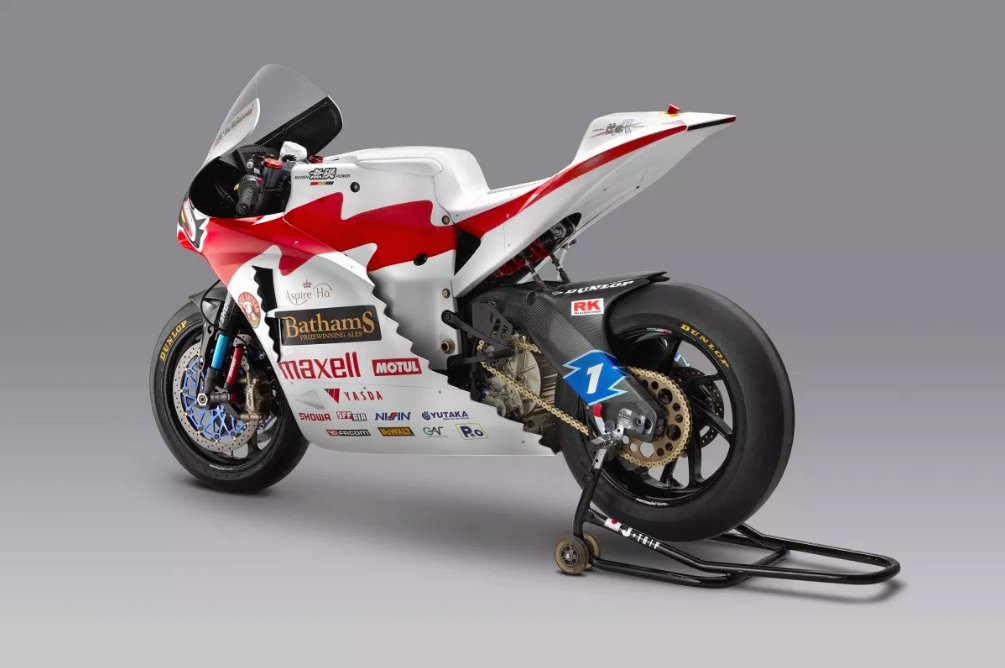
The new tail on the Hachi generates a vortex in the bike's wake
Like their fellow countrymen behind the bullet trains, the team at Mugen Shinden looked to nature and the animal kingdom for inspiration — more specifically the tail of whales — when designing the tail-section of their bike. The shape of the large ocean-going mammal’s tail generates vortexes behind it, reducing drag and increasing efficiency as it travels — or “slices” — through the water. The edges of the tail on the “Hachi” also hold a shape that too is vortex-generating, enabling the two-wheeler to cut through the air on the island in the Irish Sea with a crazy slippery drag coefficient.
Carbon Everything
I don’t think there’s a single component on a motorcycle that someone hasn’t tried to construct from carbon fiber, and rightfully so. While the exorbitant woven material does look trick as all hell, it also provides remarkable structural integrity and load-bearing qualities considering its lightweight relative to other metals. Carbon fiber also boasts unique flexing properties, which is why Ducati’s MotoGP team partnered with Ohlins to develop carbon fiber fork tubes for their latest premier class machines.

Showa's uber-trick carbon fiber fork tube prototypes
Taking a page or two from the Italian MotoGP team’s book, the crew behind the Hachi also opted to give the racer those ever-so-sweet carbon fiber fork tubes, shaving off a tiny bit of weight and affording a slight edge over the other electric two-wheeled competition. While this is the second year we’ve seen this wildly cool feature on Shinden’s TT mount, it’s nonetheless still pretty rad, and in our opinion well worth mentioning. (Editor’s Note: We can’t weight for this feature to trickle down to production bikes.)
A Curious Lack Of Advancement
As we previously mentioned, the Hachi has the exact same specs as the 2018 bike. This is a bit weird considering Mugen is partnered with fellow Japanese outfit, Maxwell. So, with the rapid advancement in battery tech, it’s a bit of a wonder that Maxell didn’t debut an improved platform for the 2019 year. The TT is clearly used to get press and publicity for Maxell’s ongoing happenings and obviously isn’t a money-making operation, so we can’t figure out why they wouldn’t opt to introduce, an even mildly improved, offering. But hey, the motorcycle gods work in mysterious ways, and I’m sure the folks in Japan had their reasons.
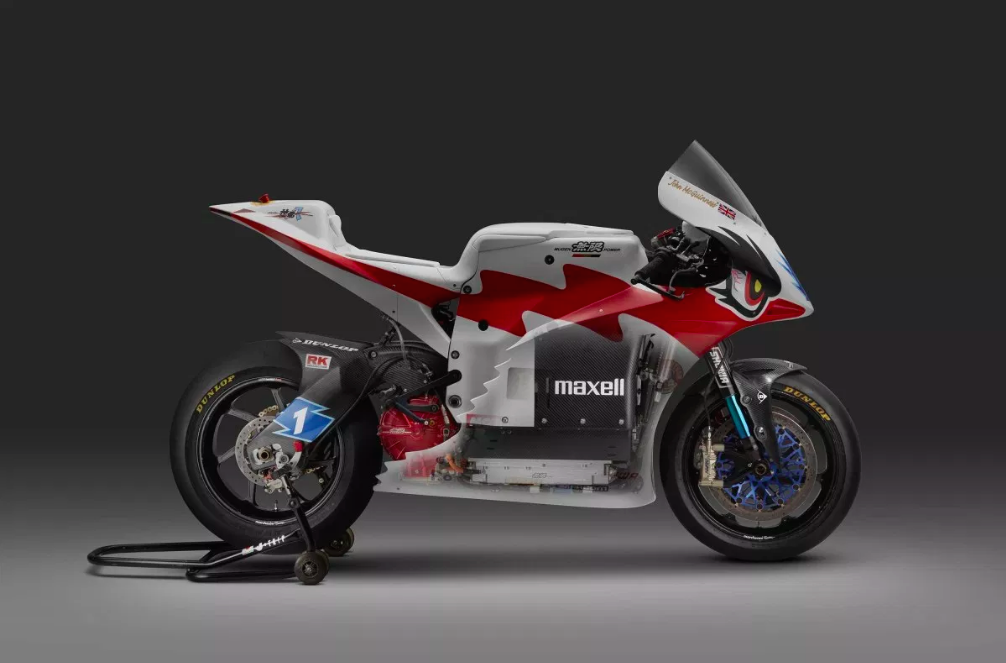
Maxell (short for MAXimum capacity dry cELL) is responsible for the battery cells found in all of Mugen's TT racers
Swinging For The Fences
For 2019 Mugen Shinden — which has bagged five back-to-back wins at the Zero TT — has set its sights high, hoping the changes to its racer will result in a new lap record. At the helm to take on the previous record of 121.824mph (average speed), will be living TT legend, John McGuinness and seasoned TT vet, Michael Rutter. If anyone can do it at this year’s Zero TT, it’ll be one of these two gentlemen on a Mugen.

The outgoing, 2018 Mugen Shinden TT Zero racer...we prefer the blue livery
The E-Rex Evolved
It was almost exactly two-years-ago that we reported on the release of a dinosaur-themed electric dirtbike. While we weren’t sure then (and still aren’t) what connection there was between dinosaurs and MXers, the focus was more on the steak and less the sizzle. The bodywork of the full-electric MXer was dino-themed, and the enclosed Honda/Mugen -developed powertrain also boasted dino-inspired housing and paint, but the real story was the technology.
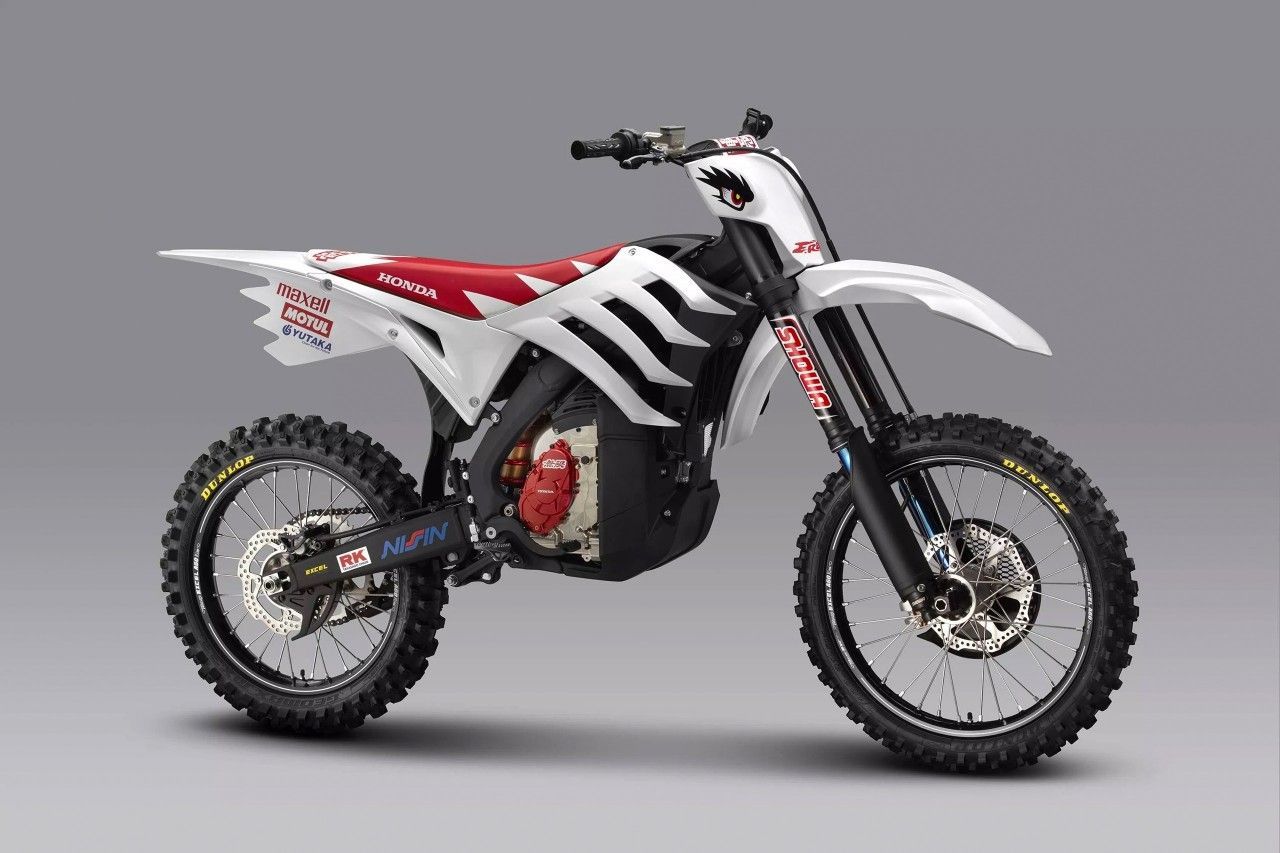
Mugen Shinden's 2019
Fast forward to today, and alongside the Hachi TT racer, Mugen has also pulled the cover off its latest “E-Rex” prototype, an evolution of the e-brapper, based on Honda’s latest DOHC, single, CRF250R. Because EV tech and culture is becoming accepted and a rapid pace, Mugen seemingly didn’t see the need to adorn the protobike in gimmicky bodywork the way it once in 2017. The machine does however still sport a few jagged edges — traits leftover from the full-on-dino-themed version.
The aluminum twin-spar frame on the E-Rex (plucked for the CRF range) doesn’t appear to have changed (not in any visual way at least aside from assumably new mounting points); however the batteries, motor, and housing look to be brand new units. Unfortunately, as excited to unveil their work as they were, Mugen has decided it would be best to play this one close to the vest, so information and specs have been extremely limited.
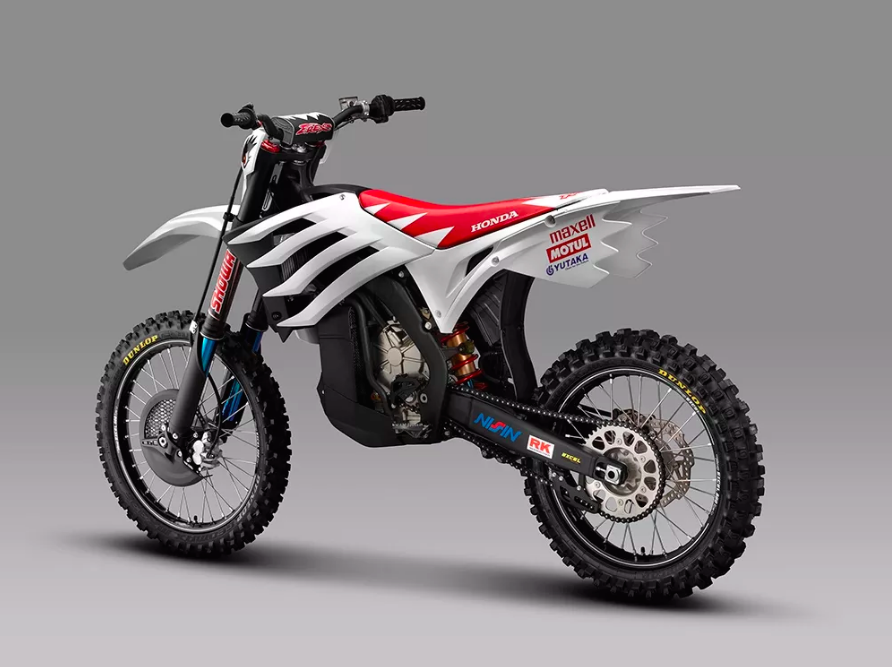
The E-Rex features rib-style bodywork up front, jagged number plate sections, and eyes painted on the front plate
Doing A Double-Take
Curiously, just as the E-Rex was being unveiled, Honda also introduced the world to its latest fully-electric prototype, the “CR Electric Prototype”. The silent dirt-goer looks a lot like Big Red’s existing two and four-strokers, however there’s another machine it bares an even closer resemblance to, and that’s the latest Mugen E-Rex.
Honda CR ELECTRIC PROTO TYPE
The bodywork is different, as are the badges the bike wears, but aside from that, they appear to be two copies of the exact same model. It’s no secret that Honda has been working hand-in-hand with Mugen for the last decade or so, so shared technology and/or hardware is hardly a surprise, though the tremendous similarity has certainly raised a few eyebrows, to say the least. What we do know about the “CR-E”, is that it’s being touted as a quarter-liter equivalent (comparable to a 250cc), and from the looks of things, it appears the Japanese E-MXer benefits from many of the same components and features found on Honda’s existing dirtbike range. That means Renthal bars, inverted Showa forks and monoshock, Nissin braking hardware, and Dunlop offroad rubber.

The 2019 Honda CR Electric Prototype
Unlike the E-Rex, which readily announces itself as being of the electron/proton-powered variety, the CR-E proto makes an active effort to disguise itself as a traditional petrol-powered thumper. Atop the electric powertrain sits what appears to be a faux-cylinder head, and said powertrain looks to be housed in existing cases borrowed from a gas-powered model. Aside from that, the powertrain is surrounded by a myriad of CNC machined billet and carbon fiber. Out ahead of the powertrain is its liquid-cooling system; a unit that looks to be about half the size of a regular CRF radiator unit.
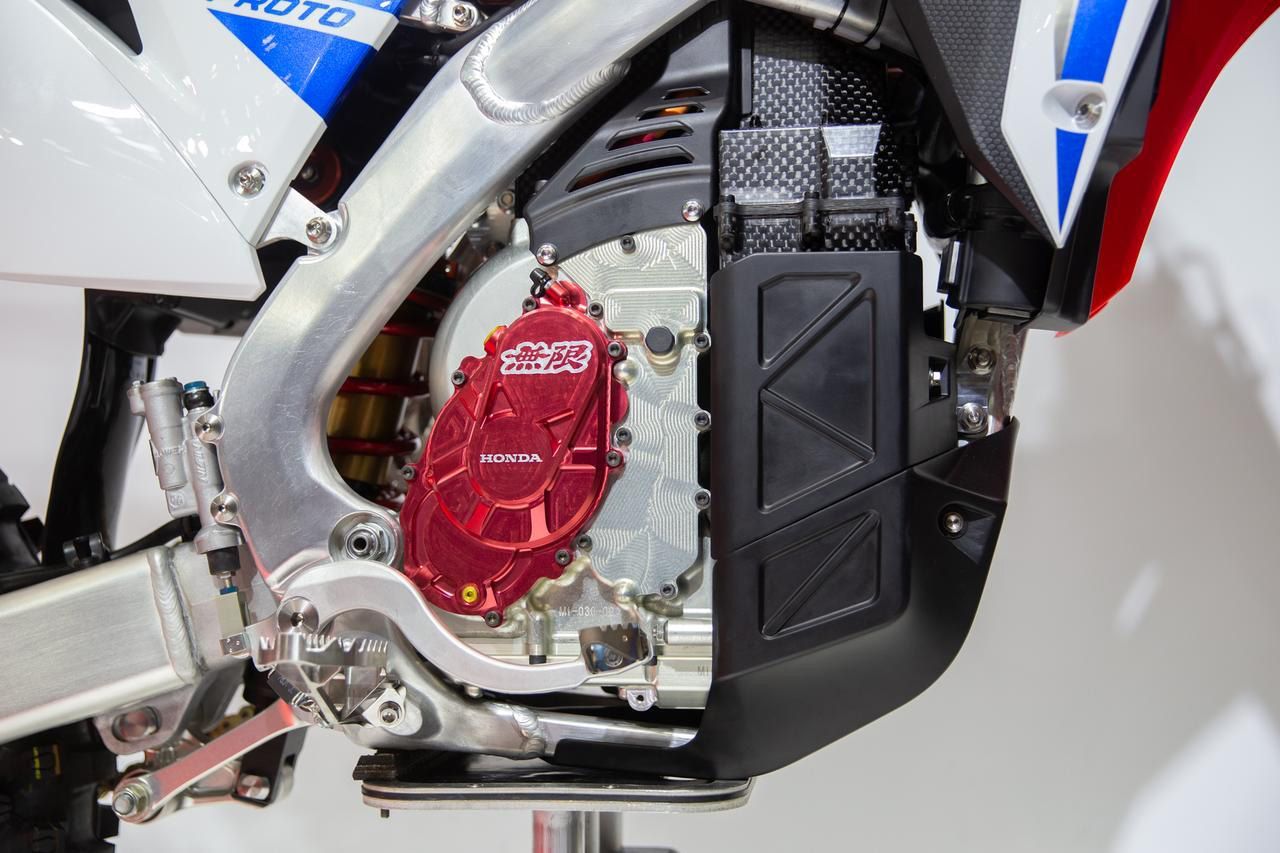
We always love to see CNC'd billet and carbon fiber, no matter what it's covering
Joining The Market
The electric CR is far from Honda’s first foray into EV technology exploration. The powerhouse of a marque offers a number of hybrid and fully-electric auto models, and in recent years has experimented with electric bikes and scooters. Plus outfits like KTM have clearly demonstrated that there is indeed a market for buyers wanting electric MXers.
The biggest hurdle for Honda is going to be delivering an electric bike that has specs matching, or beating, its four-stroke models. If Big Red can get the ebike to make more power than the CRF250R’s 30 horses, while weighing in at under the 250R’s 238lb weight, then they’ll have cleared the project’s biggest hurdles. And it’s really only a matter of time. It’ll happen.
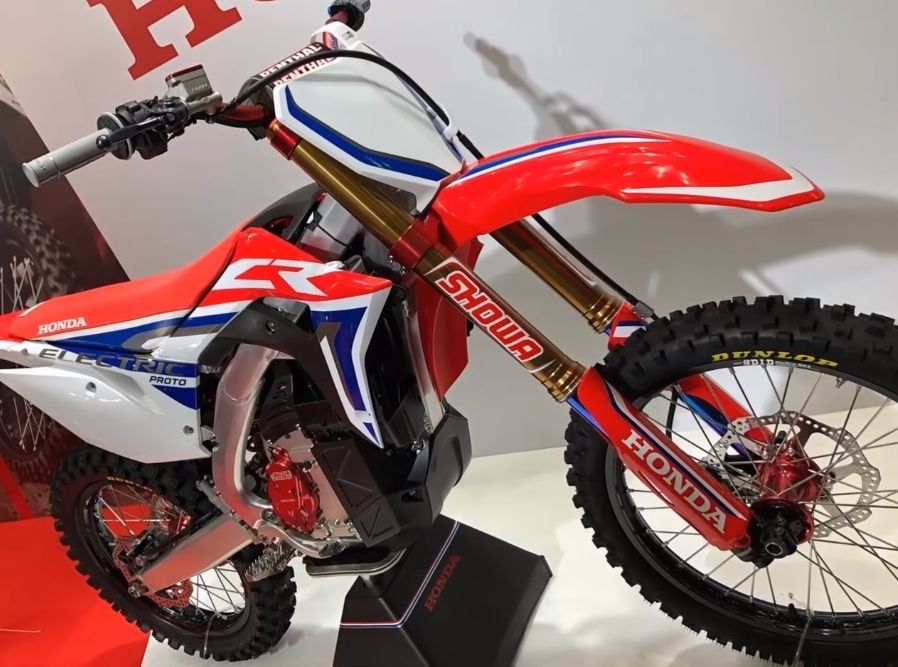
The Honda proto appears to be a deadringer for the E-Rex proto
A Winning Application
There are many pros and cons associated with electric motorcycle powertrains. Recharge time and range is a common gripe, but what two-wheeled EV’s lack in conveince, they more than make up for with low-end power and endless gobs of torque. Though an electric motor can’t hang with gas-powered mills at higher-speeds, that factor doesn’t really come into play when you’re talking about motocross — a style of riding that’s all about low-end and mid-range grunt in a lightweight, minimalistic package — the perfect application for EV powertrains.
Because the CRF range is already well developed and tooling and manufacturing is already setup for production — plus Honda seemingly owns rights to the licensing and IP on Mugen’s EV tech — there’s no reason Honda couldn’t soon start offering gas and electric versions of some specific production models. Bare in mind Honda is already doing exactly that with its electric PCX machine.
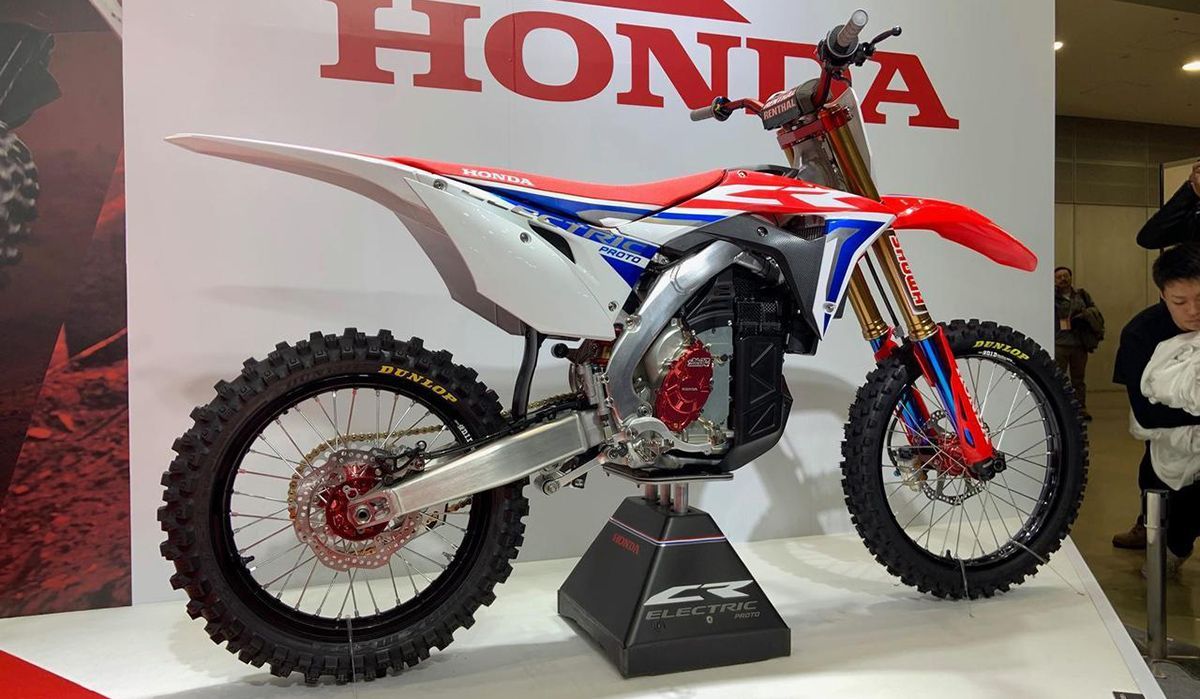
The prototype uses a wide array of existing off-the-shelf parts from Honda's CRF lineup
Leaving The Past
One reason this announcement came as such a surprise is because Honda’s off-road lineup has spent several decades carving out a solid reputation for its brand and its products largely on the strength of its four-stroke engines. Some say it was Honda and some say it was Yamaha, but either way, it was these Japanese firms that helped usher in, what’s often referred to as, “the four-stroke revolution”. So the abandonment of this in favor of new EV tech was a bit startling, granted we’d argue Honda is simply accepting the inevitable.
While Honda has yet to officially confirm (or deny) rumors swirling as to where Mugen’s funding comes from, it’s pretty blatant that Big Red is the one footing the bill for the development of Mugen’s powertrain tech. The fact Honda’s founder, Soichiro Honda, happens to be the father of Mugen’s founder, Hirotoshi Honda, very well may just be an insignificant connection…but we seriously doubt it.
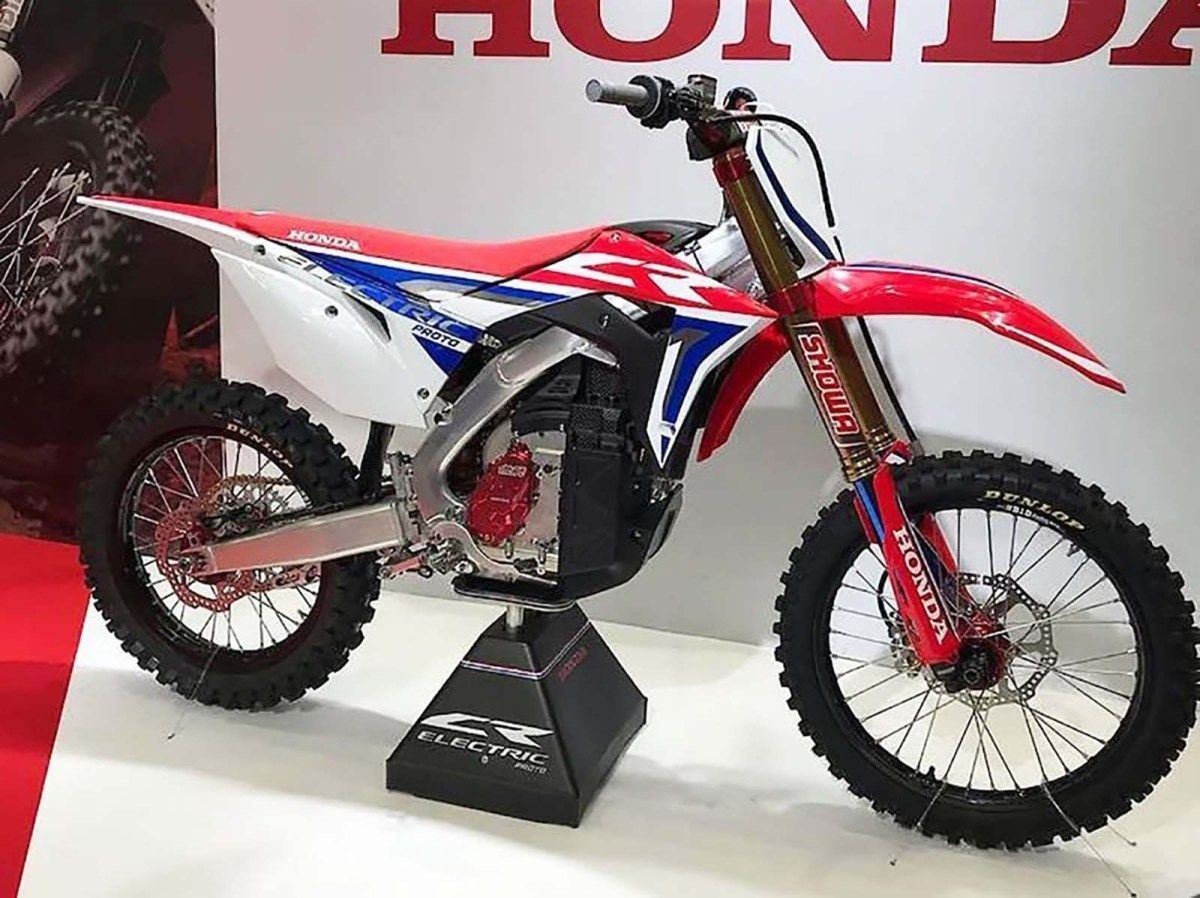
The CR Electric looks a lot like a traditional MXer
Predications
Will we see an electric dirtbike from Honda? Our guess is yes, and sooner rather than later. We predict Big Red debuts a production E-MXer by 2021, if not sooner. With the gap left in the market with the closure of Alta back in August, it seems like there couldn't be a more opportune time to get in on the electric MX game. Time will tell.
We’d also go ahead and guess that John McGuinness will break the average speed record at the Zero TT this year. Last season was, let’s say, less than ideal for the "Morcambe Missile", and he’s only got so many years left in the tank, so here’s to hoping McPint has another win in the chamber.
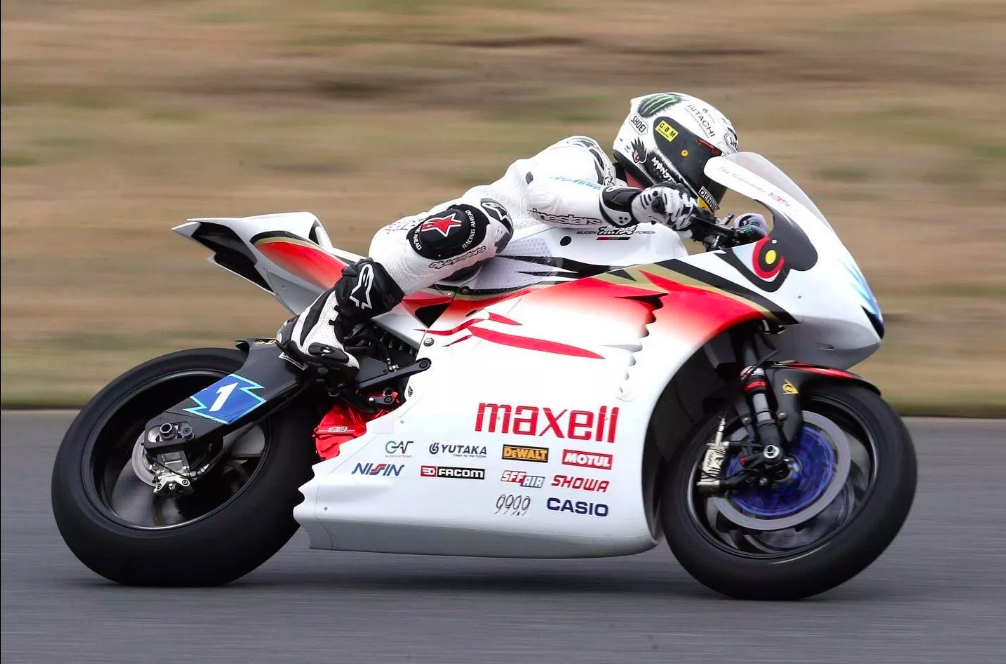
John McGuinness in action on the Mugen Shinden racer
You must be logged in to comment
Login now